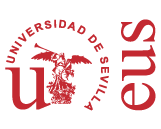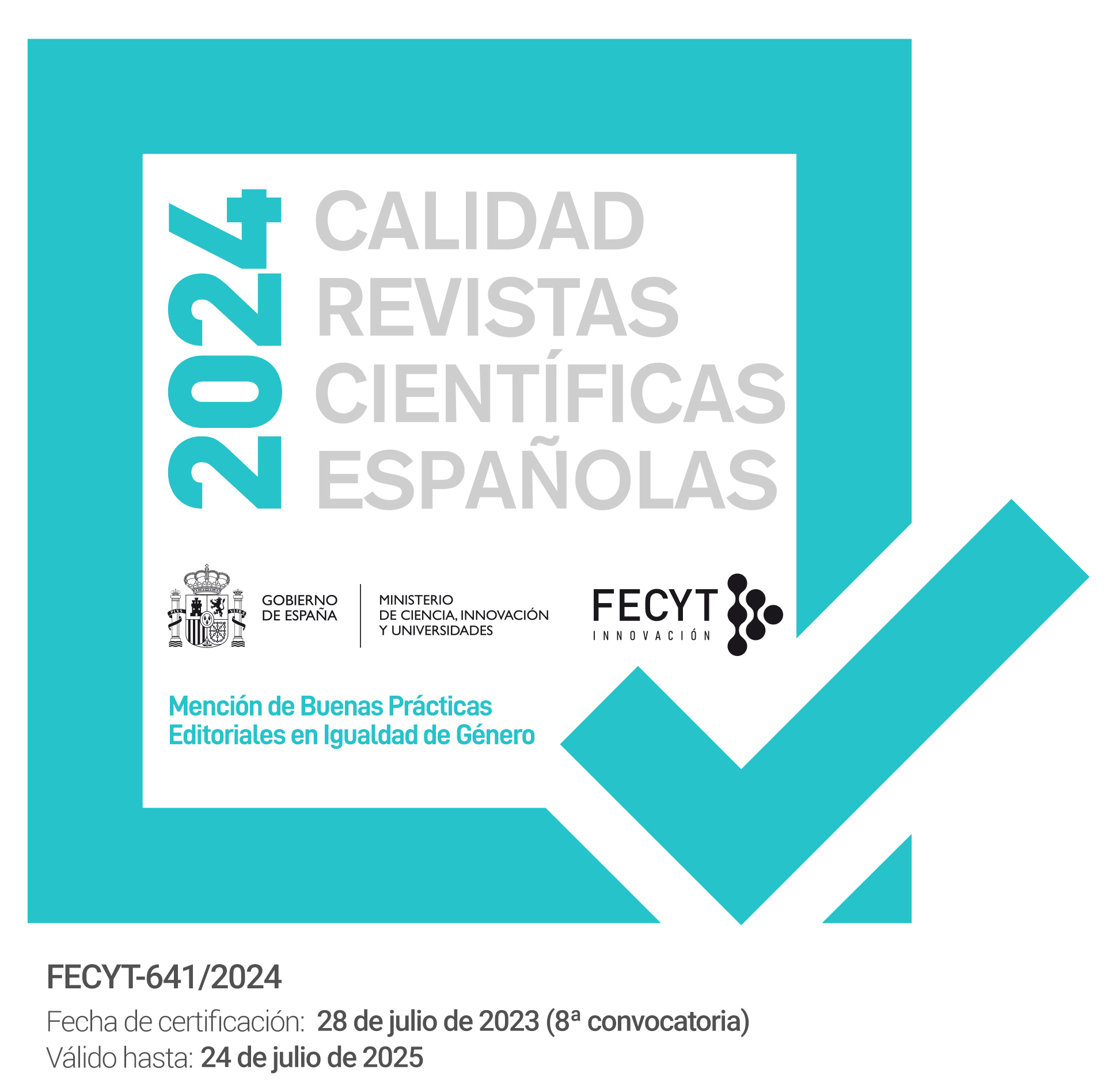“Among a dark forest of united letters”. The concept of orthographic punctuation in the normative works by the Real Academia Española (1726-1999)
DOI:
https://doi.org/10.12795/PH.2021.v35.i01.11Keywords:
history of Spanish language, linguistic historiography, Real Academia Española, orthography, orthographic punctuationAbstract
This article deals with the diachronic study of the concept of orthographic punctuation in the normative works of the Real Academia Española since 1726, date of the publication of the “Discurso proemial de la orthographía castellana”, and the year 1999, when the penultimate Ortografía de la lengua española came along. In the 2010 Ortografía, which is not studied in this work, precisely the tradition that we describe here and the conceptions of the modern currents of linguistics converge. The orthographic punctuation is an important chapter, not fully developed, in the history of the Spanish language. It reflects the linguistic doctrines (syntactic, prosodic, textual and discursive) and the stylistic ideas of each era, as well as being an essential part of the history of the written language.
Downloads
References
Álvarez Barrientos, J. (2007). Las aportaciones de Luzán a la Gramática y a la Ortografía de la Real Academia Española. En Ignacio de Luzán, Obras raras desconocidas. Tomo III. Luzán y las academias. Obra historiográfica, lingüística y varias. Larumbe.
Causse, R. (1998). La langue française fait signe(s). Lettres, accents, ponctuation. Seuil.
García de la Concha, V. (2014). La Real Academia Española. Vida e historia. Espasa.
García Folgado, M. J. (2001). Los criterios de puntuación en las ortografías de la Academia Española (1714-1999). En M. A. Esparza Torres, B. Fernández Salgado y H. J. Iederehe (eds.), Estudios de historiografía lingüística. Actas del III Congreso Internacional de la Sociedad Española de Historiografía Lingüística (pp. 153-163). Buske.
Hassler, G. (2001). Textos de referencia y conceptos en las teorías lingüísticas de los siglos XVII y XVIII. En Esparza y otros (eds.), Estudios de historiografía lingüística (pp. 559-586, vol. I). Helmut Buske Verlag.
Martínez Marín, J. (1992). La ortografía española: perspectiva historiográfica. Cauce, 14-15, 125-134.
Peñalver, M. (2012). Estudio introductorio. En Real Academia Española, Prontuario de ortografía de la lengua castellana (1844). Editorial Universidad de Almería.
Polo, J. (1974). Ortografía y ciencia del lenguaje. Paraninfo.
Fuentes documentales
Beauzée, N. (1767). Grammaire Générale ou exposition raisonnée des éléments nécessaries du langage, pour servir de fondement à l’étude de toutes les langes. Tomo II. (ed. facsimilar de Scholar Select a partir de la ed. original de Imprimerie de J. Barbou).
Correas, G. (1971). Ortografía kastellana, nueva i perfeta. El manual de Epíkteto. Espasa-Calpe (edición facsimilar del original publicado en 1630).
Instituto de España y Real Academia Española (1938). Epítome de gramática de la lengua española para la primera enseñanza. Editorial Heraldo de Aragón.
López Velasco, J. (1582). (1 de febrero de 2021) Orthographia y pronunciacion castellana. s. e.
Nebrija, A. (2011). Gramática sobre la lengua castellana (Carmen Lozano, ed., estudio y notas). Real Academia Española-Galaxia Gutenberg-Círculo de Lectores (original publicado en 1492).
Quintiliano (1997). Obra completa. Tomo I. Sobre la formación del orador (trad. y comentarios, Alfonso Ortega Carmona). Ed. Publicaciones de la Universidad Pontificia de Salamanca (original del s. I d. C.).
Real Academia Española (1983-1985). Diccionario manual e ilustrado de la lengua española. Espasa-Calpe.
— (1726). Discurso proemial de la orthographía de la lengua castellana. En Diccionario de Autoridades. Imprenta de Francisco del Hierro.
— (1741). Orthographía española. Imprenta de la Real Academia Española.
— (1754). Ortografía de la lengua castellana. Imprenta de Gabriel Ramírez.
— (1815). Ortografía de la lengua castellana. Imprenta Real.
— (1844). Prontuario de ortografía de la lengua castellana. Imprenta Nacional.
— (1853). Prontuario de ortografía de la lengua castellana. Imprenta Nacional.
— (1854). Prontuario de ortografía de la lengua castellana. Imprenta Nacional.
— (1870). Gramática de la lengua castellana. Imprenta de M. Rivadeneyra.
— (1870). Prontuario de ortografía castellana en preguntas y respuestas. Imprenta de José Rodríguez.
— (1885). Gramática de la lengua castellana. Gregorio Hernando.
— (1952). Nuevas normas de prosodia y ortografía. Imprenta de S. Aguirre Torre.
— (1969). Ortografía. Publicación que incorpora al texto tradicional las «Nuevas normas» declaradas de aplicación preceptiva desde 1.º de enero de 1959. Imprenta Aguirre.
— (1973). Esbozo de una nueva gramática de la lengua española. Espasa-Calpe.
— (1974). Ortografía. Publicación que incorpora al texto tradicional las «Nuevas normas» declaradas de aplicación preceptiva desde 1.º de enero de 1959. Imprenta Aguirre.
— (1999). Ortografía de la lengua española. Espasa.
— (2010). Ortografía de la lengua española. Espasa.
Published
How to Cite
Issue
Section
License
Copyright (c) 2021 Francisco Alejo Fernández

This work is licensed under a Creative Commons Attribution-NoDerivatives 4.0 International License.
The printed and electronic editions of this Journal are edited by the University of Seville Editorial, and the source must be cited in any partial or total reproduction.
Unless otherwise indicated, all the contents of the electronic edition are distributed under a license of use and distribution “Attribution-NonCommercial-NoDerivatives 4.0 International” . You can view the informative version and the legal text of the license here. This fact must be expressly stated in this way when necessary.
Authors who publish in this journal accept the following conditions:
- The author/s retain copyright and grant the journal the first publication right, and accept it to be distributed with the Creative Commons By NC ND 4.0 licence, which allows third parties to use what is published whenever they mention the authorship of the work and the first publication in this journal and whenever they do not make commercial use and reuse it in the same way.
- Authors can make other independent and additional contractual agreements for the non-exclusive distribution of the article published in this journal (e.g., include it in an institutional repository or publish it in a book) provided they clearly indicate that the work was published for the first time in this journal.
Authors are allowed and recommended, once the article has been published in the journal Philologia Hispalensis (online version), to download the corresponding PDF and disseminate it online (ResearchGate, Academia.edu, etc.) as it may lead to productive scientific exchanges and to a greater and faster dissemination of published work (see The Effect of Open Access).
Accepted 2021-05-06
Published 2021-12-21
- Abstract 315
- PDF (Español (España)) 230
- HTML (Español (España)) 35
- XML (Español (España)) 199







